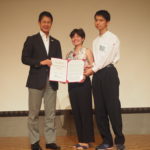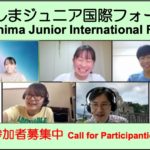Representing the lives of the Hibakusha; High school students and Hibakusha create Body Mapping Art

Selected works from the 2022 Sekohei Museum of Art exhibition.
Body Mapping. Through this largely unheard of workshop, a group of high school students in Hiroshima aims to deepen their understanding of the experiences of the Hibakusha (the name given to survivors of the atomic bombings and which translates literally as “bomb-affected-people”) and their lives up to now, and to pass on their experiences of the atomic bombings in a way that has never been done before. We visited the activities of the Hiroshima High School Peace Seminar.
Expressing the experiences of the Hibakusha in a unique and original way.
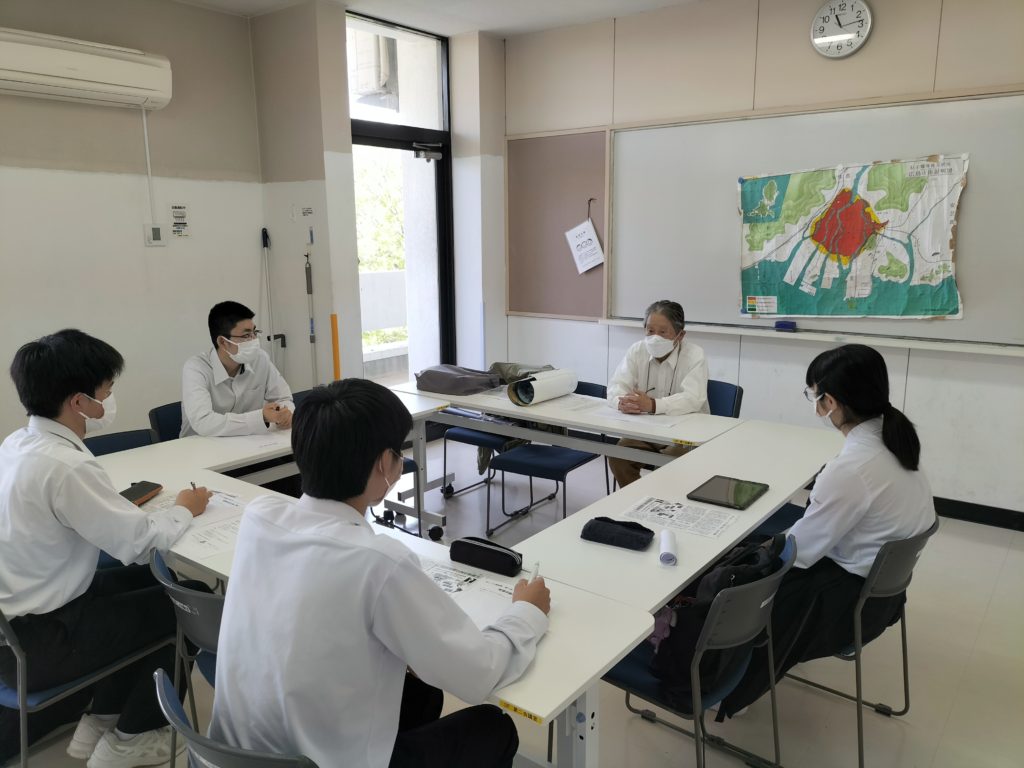
Interviews with the Hibakusha
The first step of the workshop was for the high school students to work in teams and listen closely to the Hibakusha talk about their experiences of the atomic bombing and their lives up to this point. The participants will then work together with the Hibakusha who have shared their stories to do “Body Mapping”.
Body mapping is the art of drawing the outline of one’s face and body on a piece of paper as large as a tatami mat (about 0.9 m by 1.8 m) and mapping one’s past experiences, thoughts, and feelings onto the outline. The purpose is to redefine oneself by visualizing one’s life to date on a single sheet of paper.
Participants in this workshop drew the outlines of the bodies of the Hibakusha they interviewed on paper and, after talking with them, created their own mappings using any method they chose. The drawings were all creative and ingenious: larger drawings to express powerful words, three-dimensional representations using folded paper cranes, and illustrations so that the viewer could understand at a glance what the message was about.
Better understanding builds confidence.
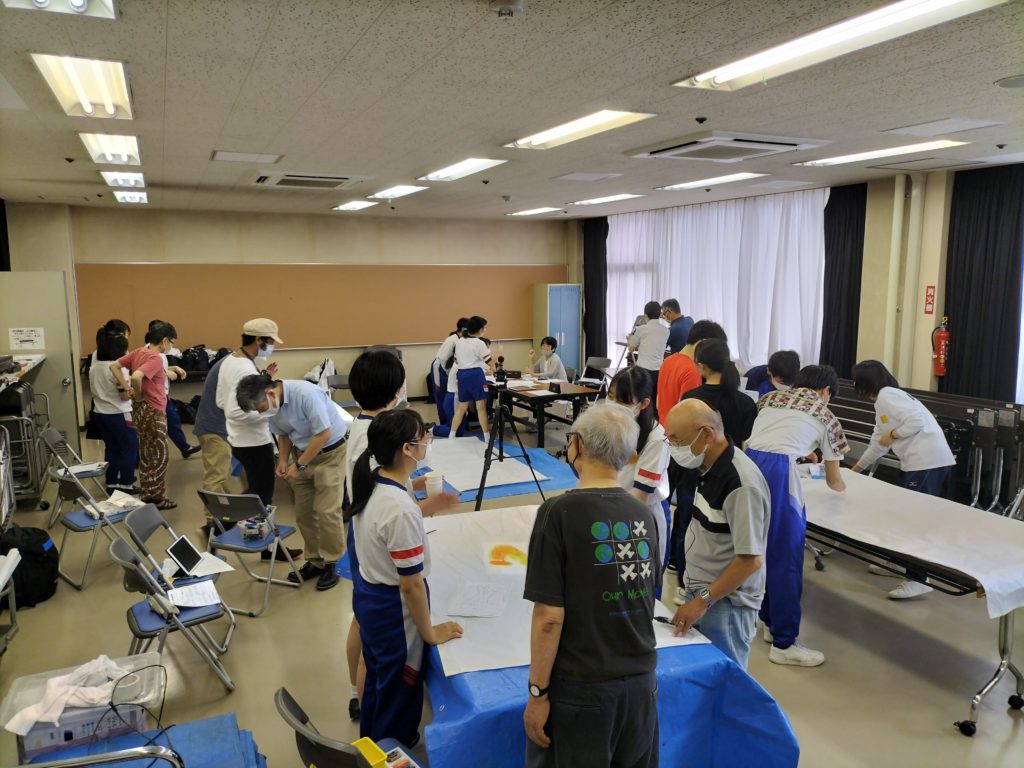
Working with the Hibakusha
Machiko Oike, a professor at the Research Center for Diversity and Inclusion, Hiroshima University, and Luli van der Does, an associate professor at the Center for Peace, Hiroshima University, are the main organizers of this project which aims to pass on the experiences of the Hibakusha using the body mapping method. This workshop was also led by both of them.
Professor Oike explained the ways in which this initiative differs from other body mapping efforts around the world: “In regular body mapping, people express their own life experiences themselves, but in this initiative, high school students worked together with Hibakusha to portray the Hibakusha’s life experiences. This collaborative effort was unique and unparalleled in the world.”
Presenting the results of her analysis of the high school students’ questionnaires, Associate Professor Luli van der Does said, “Body mapping is an expression of a person’s mental and emotional landscapes. Through dialogue with the Hibakusha during the mapping process, the high school students learned about the reality of the atomic bombing and how the survivors remember their lives after the bombing. Through this new attempt to pass on the experiences of the atomic bombings by combining the Hibakusha’s testimonies and body mapping, the high school students have developed a sense of “personal relevance and ownership” of the atomic bomb memories. Moreover, the experience has given them the confidence to work proactively and spontaneously toward a peaceful future. I am surprised and delighted at the encouraging outcomes.”
Passive Listerners Become Tellers
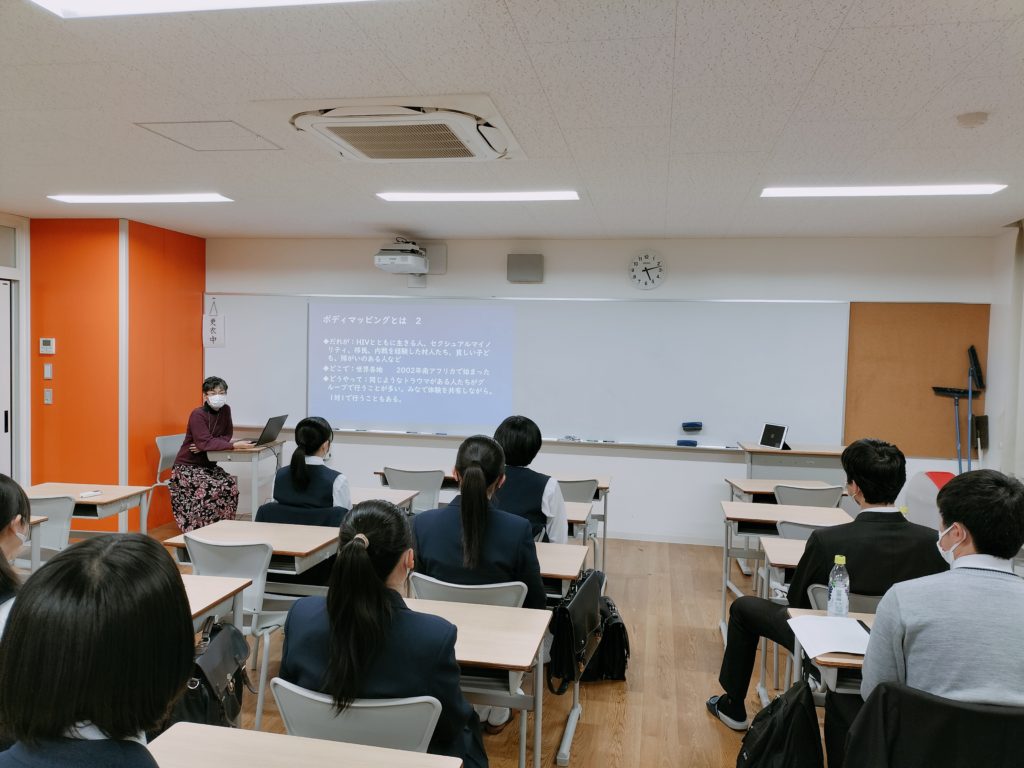
Reflection and teaching session at the workshop.
One of the participating students from the Social Science Research Club of Yasuda Girls’ High School commented: “I had heard stories of Hibakusha before, but I had never had the chance to talk about them. I was particularly impressed by the fact that those who had experienced the atomic bombing when they were very young and therefore had few memories of it, and had always considered themselves ‘not hibakusha,’ realized that they had to tell their stories and shared their experiences with us. They had a clear mission in mind.”
A student from the Peace Studies Club of Sotoku High School also commented: “By physically representing my thoughts, I was able to reflect on them more deeply and understand them better than ever before. I think it is important for us to tell about the atomic bombings and the importance of peace to as many people of our generation as possible. If possible, I would like to have another body mapping session with Hibakusha so that I can further communicate my feelings.” Through body mapping, the participants were able to transform their passive attitude of listening to Hibakusha’s experiences into a proactive attitude of working together with the Hibakusha to express and share their lives.
Connecting Hibakusha with the Younger Generation

Reflection and teaching session at the workshop.
Together with the activities of the Hiroshima High School Peace Studies, the “Hiroshima Association for the Creation of a Peace Image of the World’s Children (Sekohei)” is working toward the creation of a world free of nuclear weapons and wars. The group has held the “Sekohei Museum of Art” every summer since 2002, the year after the “Peace Image of the World’s Children” statue was erected in front of the former city baseball stadium site.
Mr. Terumi Mochizuki of the administrative department said, “This workshop, brought together young people and Hibakusha to create a positive experience, and not only the high school students but also the Hibakusha commented that they felt their feelings and thoughts were fully conveyed. It is becoming more and more important to talk about what actually happened at the time of the atomic bombings. Rather than just hearing about the atomic bombings, this activity helped young people deepen their understanding and speak about the event in their own words, and that was very rewarding.
We do not have much time left to have direct exchanges with the Hibakusha. It is important to communicate and learn as much as we can in the little time we have left. And from there, the youth who will lead the next generation will be able to tell the stories of the Hibakusha to as many people as possible. Many of us are engaged in activities to keep the events of that day fresh in our collective memory for many years to come.
*This activity was made possible by a grant from the Japan Society for the Promotion of Science (JSPS) International Cooperative Research Acceleration Fund 21KK0032 (Pl:Luli van der Does).
Research Center for Diversity and Inclusion, Hiroshima University
HP:https://www.diversity.hiroshima-u.ac.jp/dandi.html
The Center for Peace, Hiroshima University
HP:https://heiwa.hiroshima-u.ac.jp/
Tags associated with this article



